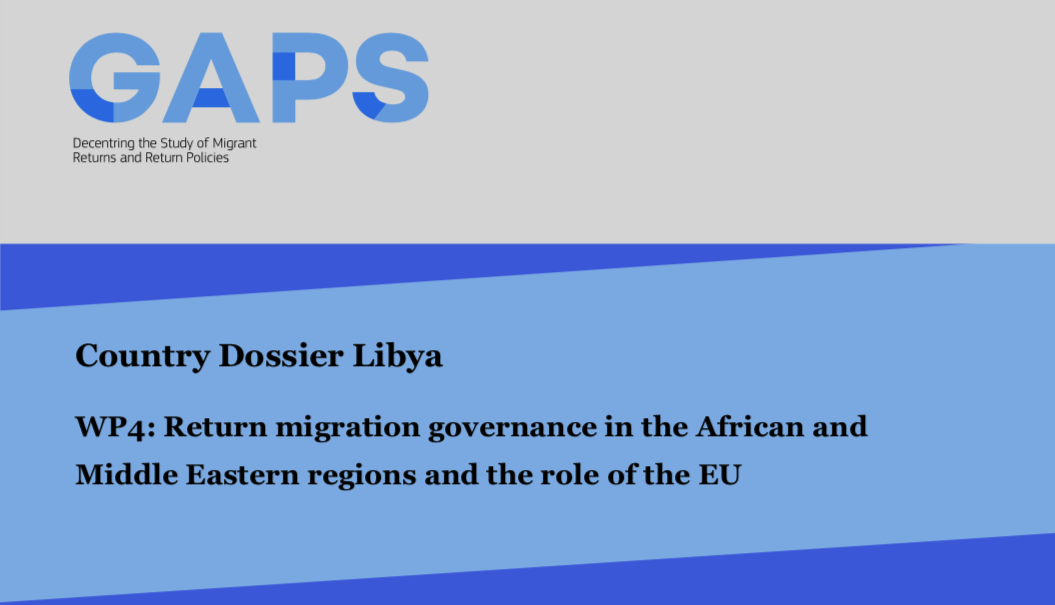Country Dossier Libya: Return migration governance in the African and Middle Eastern regions and the role of the EU
Authors:
Gerasimos Tsourapas | University of Glasgow
Executive Summary:
This country dossier examines the governance of return migration from Libya to Nigeria, conducted as part of WP4 of the GAPS–Decentring the Study of Migrant Returns and Readmission Policies in Europe and Beyond project. Based on a range of primary and secondary data, it explores the regional and international dynamics influencing return migration. Libya, a North African country with a significant Mediterranean coastline, was once an immigration hub under the leadership of Muammar Gaddafi, who ruled from 1969 until his fall in 2011. Gaddafi’s Pan-African policies attracted labour from across Africa, including Nigeria, a populous West African nation. However, following Gaddafi’s ousting, Libya transitioned into a primary transit point for sub-Saharan African migrants aiming to reach Europe. The ensuing political vacuum allowed militias to gain control over crucial migration routes and detention facilities, making migration governance even more challenging. Return migration from Libya can be voluntary or forced. The Voluntary Humanitarian Return (VHR) program, managed by the International Organization for Migration (IOM) with financial support from the European Union (EU), aids migrants who choose to go back home. However, the “voluntary” aspect is complicated, as many migrants opt for this path due to the harsh and often abusive conditions in detention centres. Forced returns, where migrants are detained and deported under coercion, are associated with significant human rights abuses. The actors in return migration governance include the Libyan Government of National Unity (GNU), which has limited control, militias that profit from migration through detention and smuggling operations, and international organizations like the IOM. The Libyan Coast Guard, funded in part by the EU, intercepts migrants attempting to cross the Mediterranean and returns them to shore, often resulting in detention. The EU plays a significant role in influencing these practices through funding agreements such as the 2017 Italy-Libya Memorandum of Understanding, aimed at curbing migration flows to Europe. However, these agreements have faced criticism for prioritizing border control over the welfare of migrants. Libya’s internal drivers of migration governance focus on national security and economic strain, prompting strict controls and reliance on non-state actors like militias. Externally, the EU’s desire to reduce irregular migration has led to substantial financial investments in programs to support return and reintegration. Nevertheless, these programs are often viewed as mechanisms to shift the responsibility of migration management to transit countries like Libya. Limited infrastructure, corruption, and fragmented authority exacerbate the challenges of effective and humane governance. The consequences of these practices are profound. Migrants in Libya often face inadequate protection, with many held in detention centres known for poor conditions and abuse. Policies that restrict movement result in enforced immobility, trapping migrants in a country unable to provide safe passage or return options. Diplomatic relations between Libya, the EU, and sub-Saharan African countries, such as Nigeria, are strained, as origin countries struggle to reintegrate returnees with minimal support. This dossier emphasizes the need for policies that integrate border control with comprehensive humanitarian considerations to address the root causes of migration while protecting migrants’ rights.
Please find the entire DOI report by clicking the button below:

